Abstract
Different methods for the dry preservation of colostrum to be used as a total replacement for bovine colostrum were evaluated. Pooled colostrum from the first and second postpartum milkings from multiparous dairy cows containing immunoglobulin in excess of 40 g/L was freeze-dried, microwave vacuum evaporated, and spray-dried. Spray-drying produced a dried colostrum in which immunoglobulin quantity and function were preserved and was the most cost-effective. Other dehydration methods, although effectively conserving immunoglobulins, were too slow and costly to be used to produce a bovine colostrum replacer. Newborn, colostrum-deprived, dairy calves fed spray-dried colostrum containing 126 grams of immunoglobulin reconstituted in three liters of water as their sole source of immunoglobulin achieved normal mean serum immunoglobulin concentrations. Spray-dried colostrum with high concentrations of immunoglobulin may be produced economically and used as an effective and convenient colostrum replacer in newborn calves.
Full text
PDF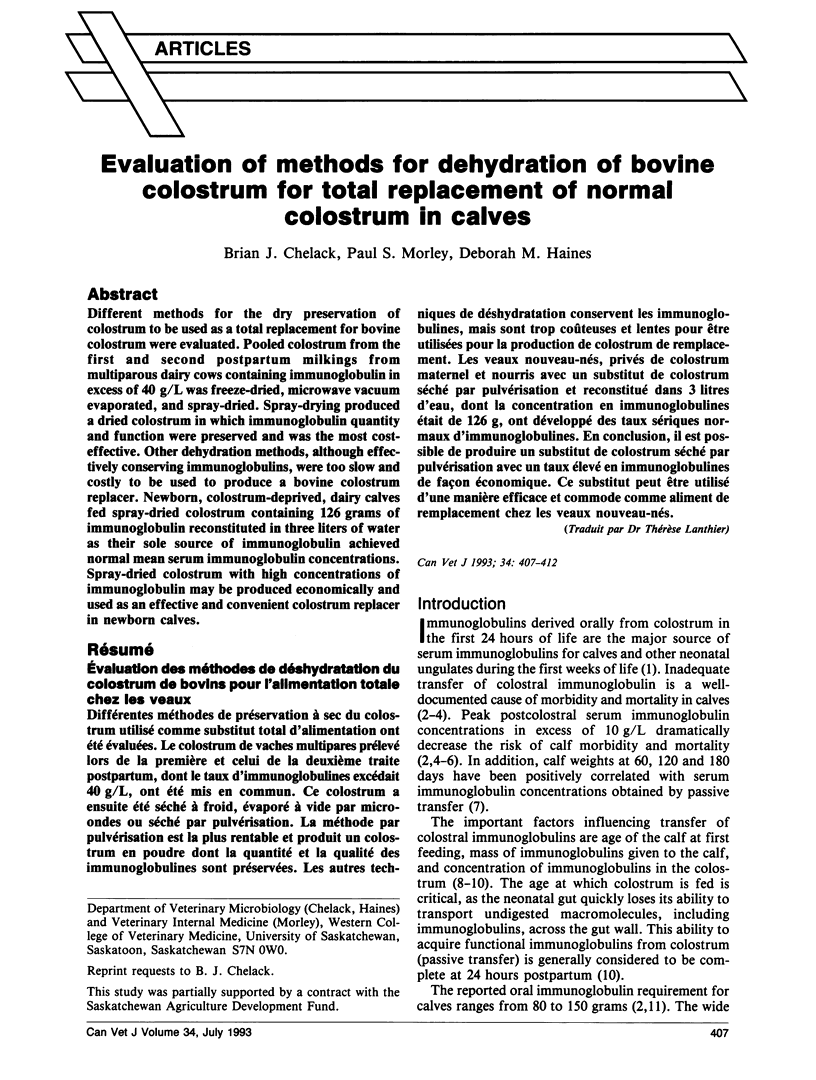
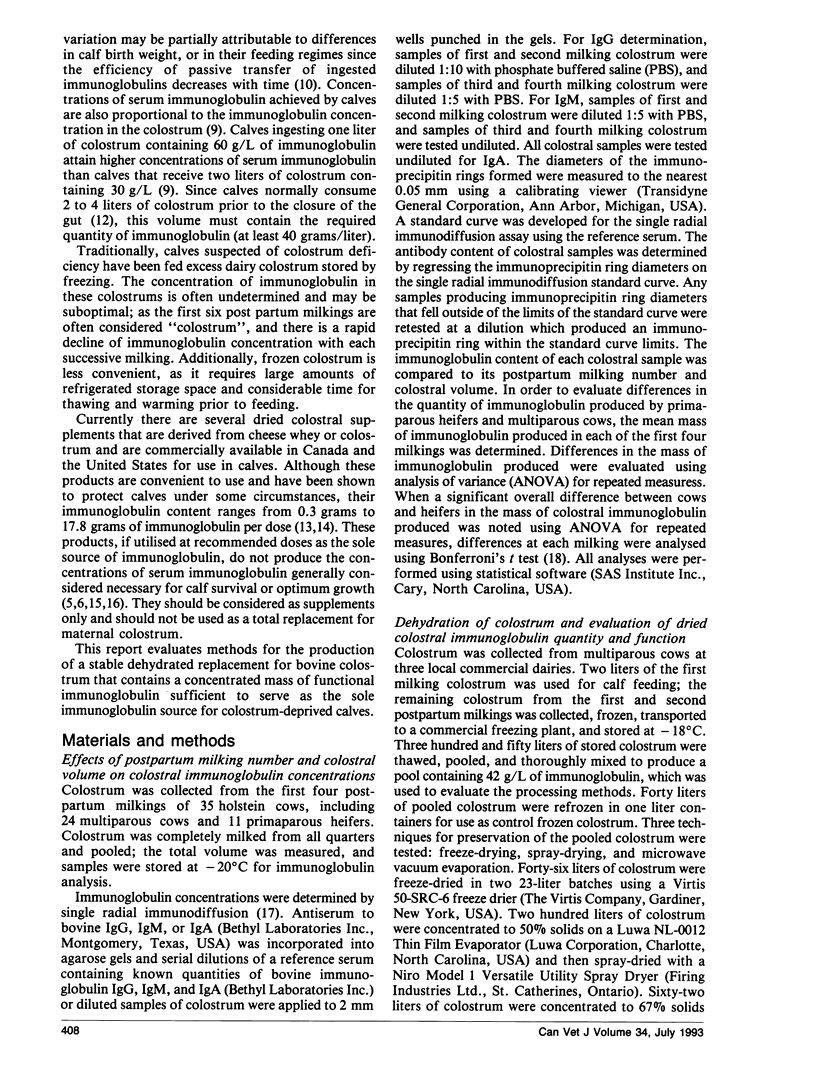
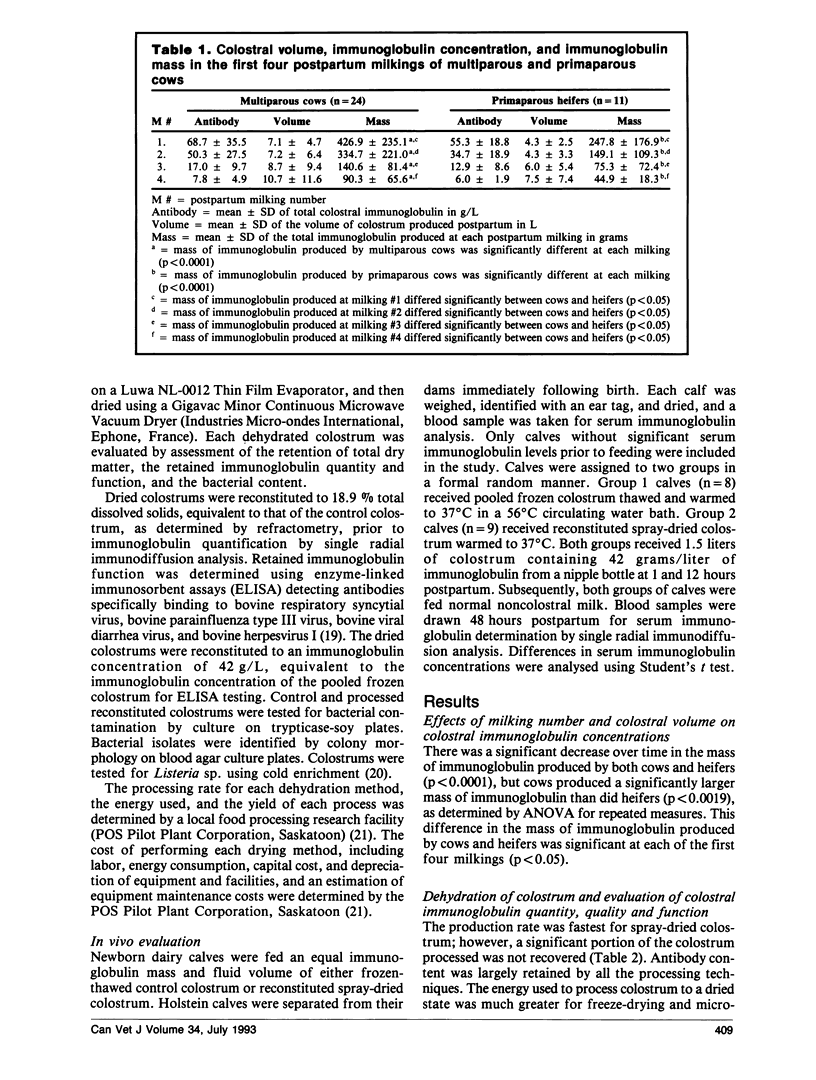
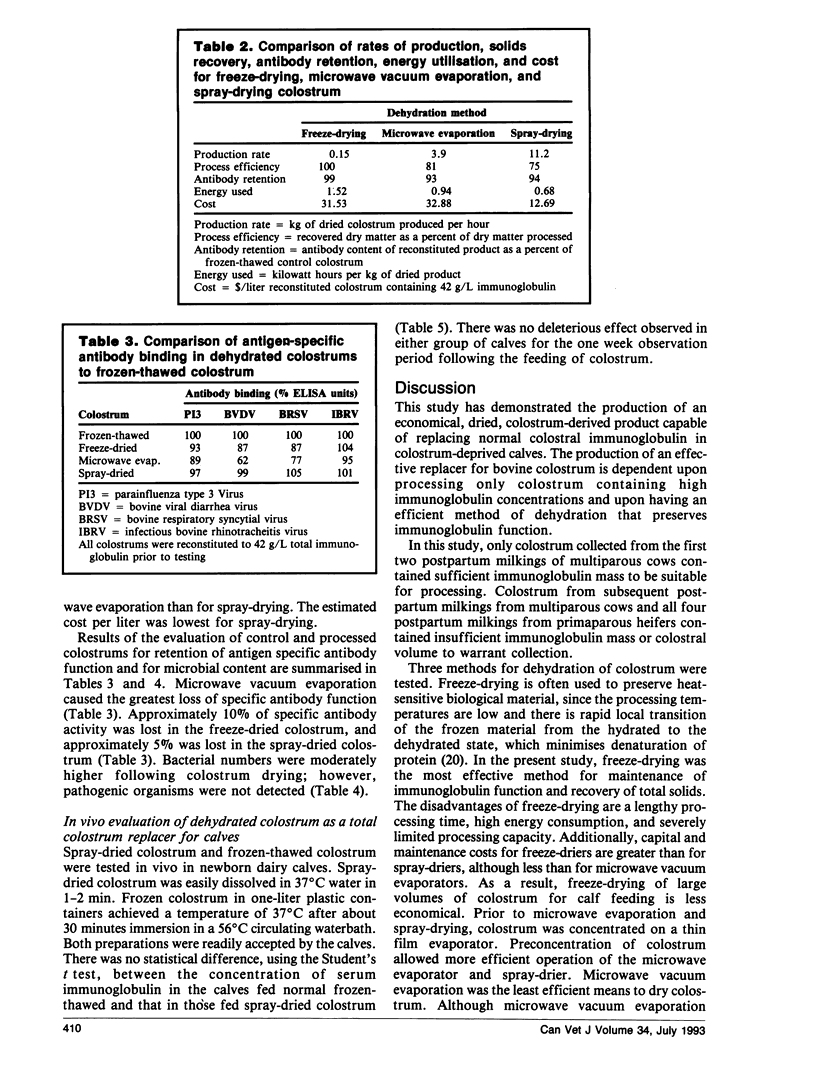
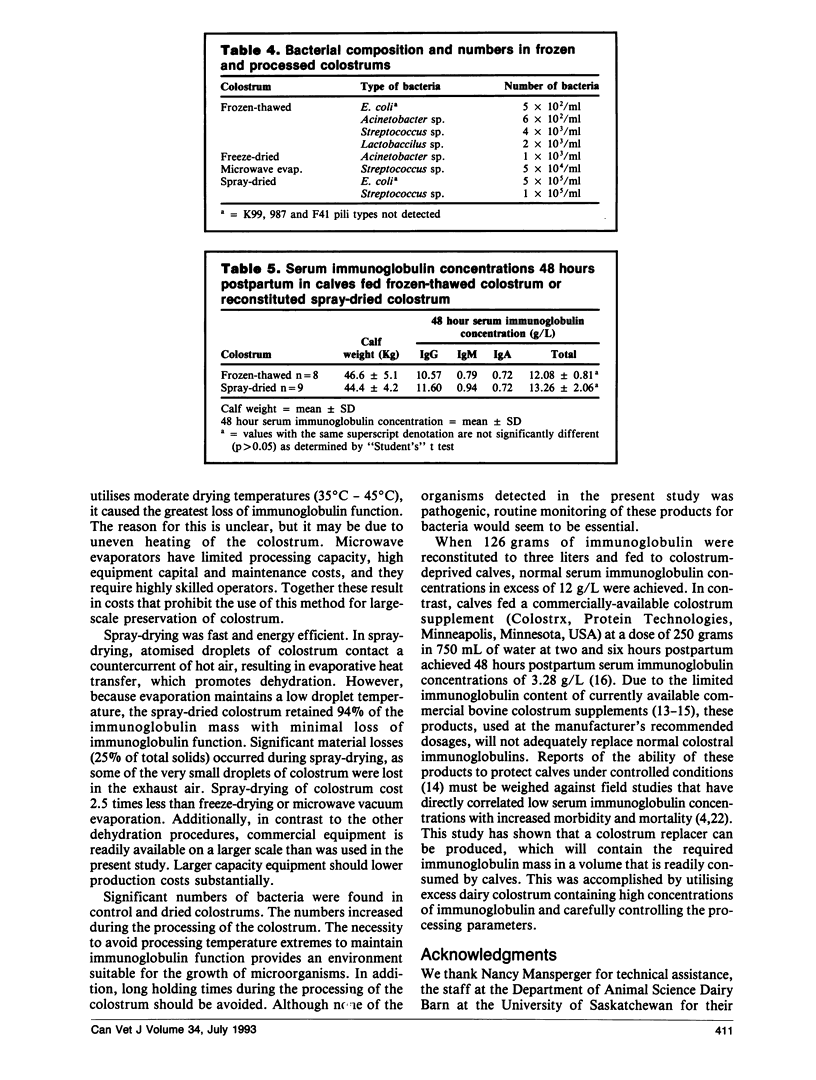
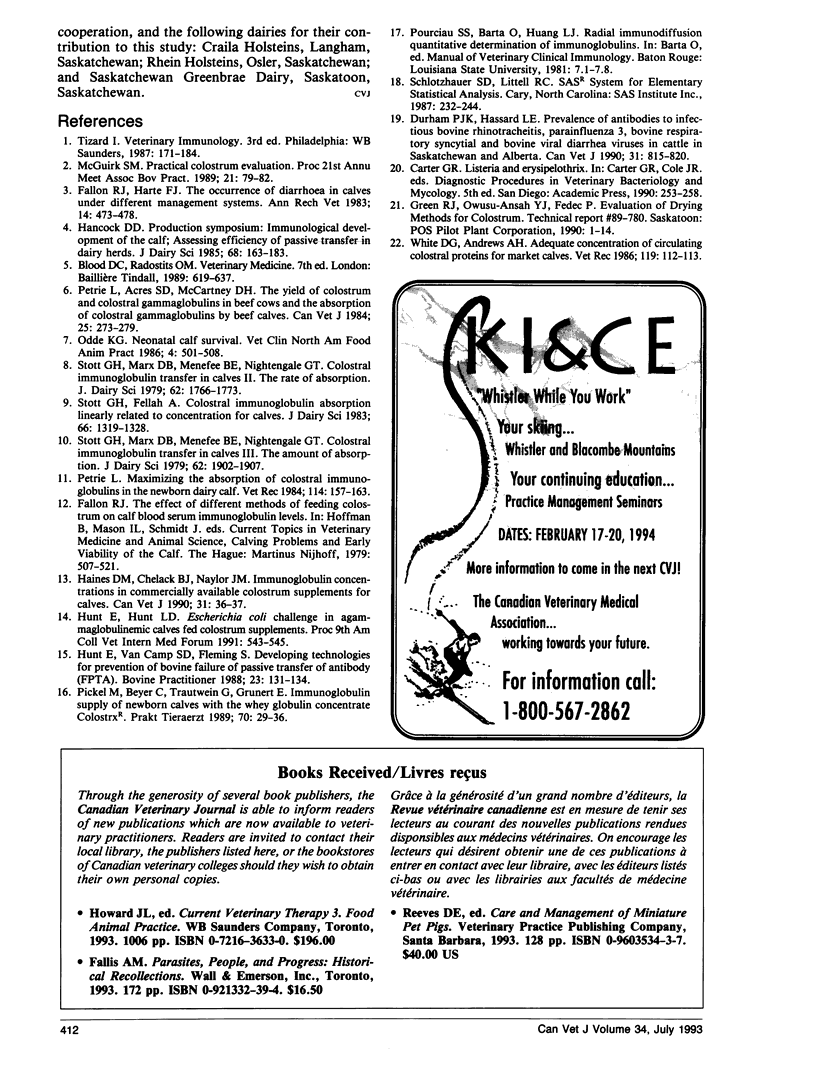
Selected References
These references are in PubMed. This may not be the complete list of references from this article.
- Durham P. J., Hassard L. E. Prevalence of antibodies to infectious bovine rhinotracheitis, parainfluenza 3, bovine respiratory syncytial, and bovine viral diarrhea viruses in cattle in Saskatchewan and Alberta. Can Vet J. 1990 Dec;31(12):815–820. [PMC free article] [PubMed] [Google Scholar]
- Fallon R. J., Harte F. J. The occurrence of diarrhoea in calves under different management systems. Ann Rech Vet. 1983;14(4):473–478. [PubMed] [Google Scholar]
- Haines D. M., Chelack B. J., Naylor J. M. Immunoglobulin concentrations in commercially available colostrum supplements for calves. Can Vet J. 1990 Jan;31(1):36–37. [PMC free article] [PubMed] [Google Scholar]
- Hancock D. D. Assessing efficiency of passive immune transfer in dairy herds. J Dairy Sci. 1985 Jan;68(1):163–183. doi: 10.3168/jds.S0022-0302(85)80811-0. [DOI] [PubMed] [Google Scholar]
- Odde K. G. Survival of the neonatal calf. Vet Clin North Am Food Anim Pract. 1988 Nov;4(3):501–508. doi: 10.1016/s0749-0720(15)31027-6. [DOI] [PubMed] [Google Scholar]
- Petrie L., Acres S. D., McCartney D. H. The yield of colostrum and colostral gammaglobulins in beef cows and the absorption of colostral gammaglobulins by beef calves. Can Vet J. 1984 Jul;25(7):273–279. [PMC free article] [PubMed] [Google Scholar]
- Petrie L. Maximising the absorption of colostral immunoglobulins in the newborn dairy calf. Vet Rec. 1984 Feb 18;114(7):157–163. doi: 10.1136/vr.114.7.157. [DOI] [PubMed] [Google Scholar]
- Stott G. H., Fellah A. Colostral immunoglobulin absorption linearly related to concentration for calves. J Dairy Sci. 1983 Jun;66(6):1319–1328. doi: 10.3168/jds.S0022-0302(83)81941-9. [DOI] [PubMed] [Google Scholar]
- Stott G. H., Marx D. B., Menefee B. E., Nightengale G. T. Colostral immunoglobulin transfer in calves II. The rate of absorption. J Dairy Sci. 1979 Nov;62(11):1766–1773. doi: 10.3168/jds.S0022-0302(79)83495-5. [DOI] [PubMed] [Google Scholar]
- Stott G. H., Marx D. B., Menefee B. E., Nightengale G. T. Colostral immunoglobulin transfer in calves. III. Amount of absorption. J Dairy Sci. 1979 Dec;62(12):1902–1907. doi: 10.3168/jds.S0022-0302(79)83521-3. [DOI] [PubMed] [Google Scholar]
- White D. G., Andrews A. H. Adequate concentration of circulating colostral proteins for market calves. Vet Rec. 1986 Aug 2;119(5):112–114. doi: 10.1136/vr.119.5.112. [DOI] [PubMed] [Google Scholar]


